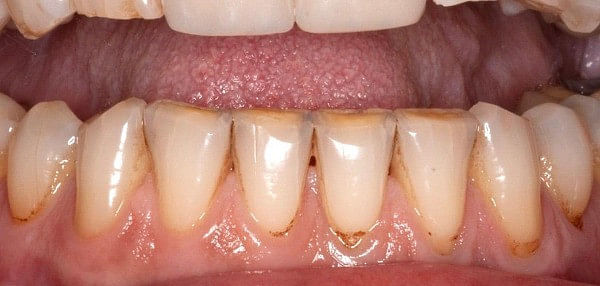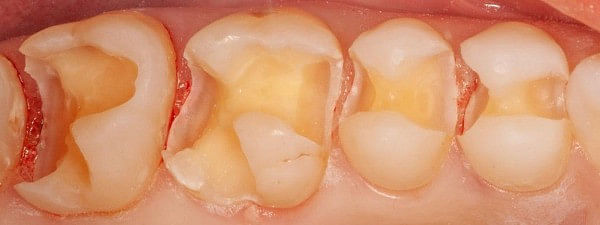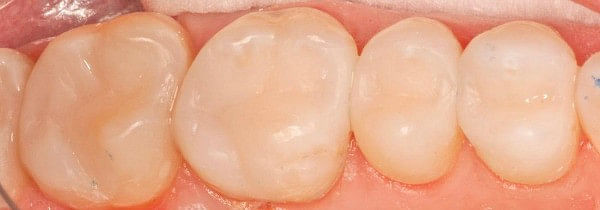

Education
Station
Minimally Invasive Dentistry
The term “minimally-invasive dentistry” is based on the idea that nothing is as strong and suitable for the oral environment as our natural teeth. Therefore, it is of utmost importance to conserve natural tooth structure. This is particularly true for enamel, the strongest substance in our bodies (stronger than bone). Obviously, the best way to approach being healthy and maintaining a healthy mouth is to prevent the disease from happening in the first place (visit “Education Station” for articles on oral/systemic health). But when the equilibrium of our bodies or our mouths tips, and allows the disease to take hold, we must then choose when and how to address it.
Over the years, it became apparent how much my patients hated the idea of having their teeth cut down in order to restore them with crowns, especially when it involved the front teeth. That is, until techniques and materials were developed that allowed us to restore teeth to normal esthetics, form, and function without the use of crowns. This general concept is known as composite bonding. Though there are many different techniques and materials employed by dentists in performing this service, our technique is known as Maximized Adhesive Dentistry (MAD) and the material we use is a biocompatible, BPA-free composite.
The truth is that the basis of this technology is not totally new. It has been around for 30-40 years but originally with limitations on strength, wear-resistance and esthetics. Now, with advances in new technology, all that has changed. The newer materials are filled with nano-particles, silica (glass) beads, which are stronger and harder. In addition, new breakthroughs in our ability to adhere the material to the teeth have tremendously increased the longevity of this service. In our practice, we adhere to the teeth by utilizing a specific protocol (#MADprotocol), which was discovered by Dr. Bruce LeBlanc (Dr. LeBlanc’s uncle), taught to, and adopted by dozens of other dentists, and yields incredibly predictable results.
So what does this mean to our patients? It means that finally we can truly practice minimally invasive dentistry, where we don’t have to cut teeth down to make them stronger. Teeth are strengthened from the inside out. We now just take away the old fillings and/or decay, thoroughly disinfect, and adhere the composite to the teeth, thus preserving their integrity and as a side benefit, increasing the probability of preventing abscesses. Although the costs are greater than the mercury-amalgam fillings, they are half to two-thirds the cost of buildups and crowns. This has totally changed the way dentistry is practiced today! Below are some photos which demonstrate this philosophy.
This first case is a female patient in her 50’s. She presented to us with significant wear on the lower anterior teeth, a sign of clenching, and grinding of the teeth (bruxism). Normal and healthy anterior teeth have approximately 2 mm of enamel at their edges. Here, the enamel has been completely worn away, exposing the more decay-prone dentin.

This presents both esthetic and decay concerns for our new patient. After discussing the root cause of this condition, and offering ways to prevent its recurrence, we offered her 3 options: (1) do nothing, (2) prepare (cut down) the teeth for veneers or crowns, or (3) perform Maximized Adhesive Dentistry (MAD) using composite. She chose the third option and was thrilled with the result. This was performed in a single 3-hour appointment, and in this case without the use of a local anesthetic.

Here is the case of a woman in her mid-30’s who came to us as a new patient, wanting to be proactive and address early signs of oral disease before becoming serious issues. During the New Patient Experience, we showed her photographs and X-rays of her upper right posterior teeth, with old failing “fillings”, and she was concerned.

After much discussion, and showing her photographs of prior cases utilizing the minimally-invasive technique, she chose the Maximized Adhesive Dentistry (MAD) protocol. After administering a local anesthetic, we excavated all the old failing fillings and resulting tooth decay, preserving all the healthy enamel that remained.

We then removed all debris and contaminants, thoroughly disinfected the teeth, and incrementally built back and sculpted them with composite… no crowns, no root canals. Truly a great example of where art and science meet in the practice of dentistry! This quadrant of the mouth was restored in one long morning appointment.



